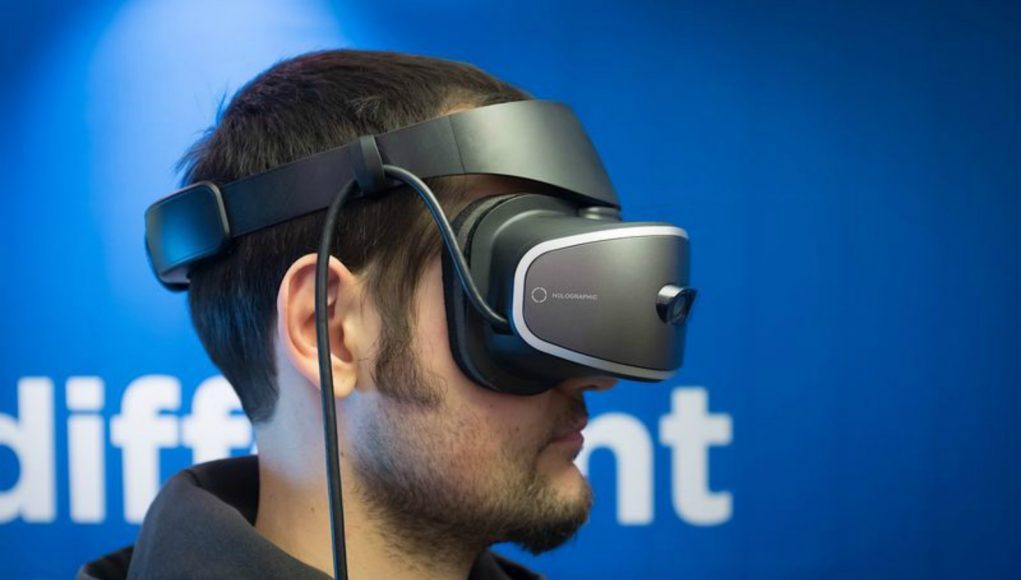The first VR headset for Window’s recently announced Holographic platform is almost here, and according to a report by The Verge, it’s going to cost between $300 and $400 when it goes on sale later this year.
Ramping up for CES 2017 in Las Vegas, Lenovo has revealed their newest entry into the world of VR, a yet unnamed headset sporting an impressive dual 1440 × 1440 OLED displays, a PlayStation VR-style halo strap system, and dual cameras that allow for room-scale positional tracking.
Lenovo told The Verge the price of the new VR headset isn’t fixed just yet, but should be “closer to $300.”
Not much else is known about the headset, but Lenovo maintains they’ll be targeting a final weight of around 350g, about 200g lighter than the HTC Vive and 100g lighter than the Oculus Rift. The headset shown to The Verge wasn’t working, so no information is currently available on field-of-view or whether the impressive sounding dual 1440 displays really deliver a better picture than the specially treated, albeit lower resolution 1080 × 1200 dual OLEDs in both the Rift and Vive.
Lenovo’s headset, while not officially confirmed, looks to employ computer vision for the purpose of positionally tracking the headset, effectively letting you play in a room-scale area without the need of external apparatus/sensors like PlayStation VR, Oculus Rift and HTC Vive currently use. If tracking proves to be reliable, Lenovo’s new headset could be a serious contender in the burgeoning VR hardware market.
In the initial announcement of the Holographic platform back in October, Terry Myerson, Microsoft executive VP of Windows and Devices, says that VR headsets created by OEMs conforming to the company’s new Windows 10-based platform “will be the first and only to ship with inside-out, 6-degrees of freedom sensors.”
More Windows Holographic headsets are said to come in 2017 from HP, Asus, Acer and Dell.
We’re currently at CES in Las Vegas, so check back for previews, hands-ons and all the latest AR/VR news.











